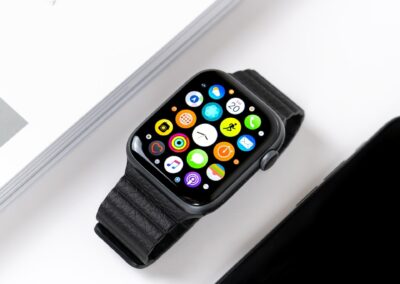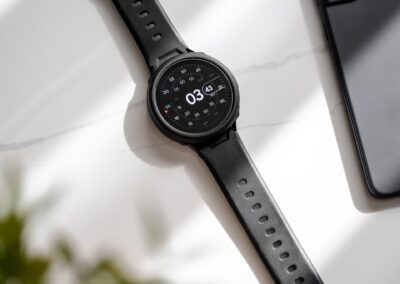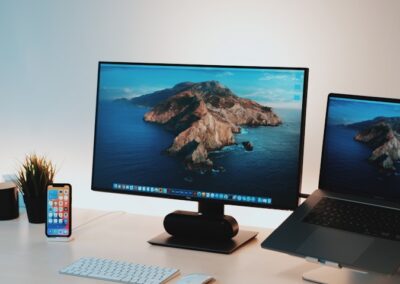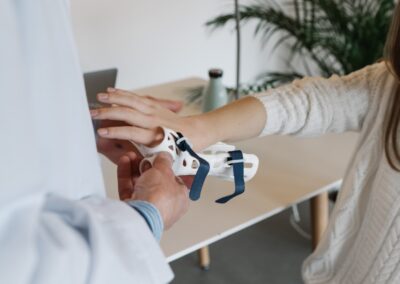Revolutionizing Space Exploration with Wearable Augmentation
Enhancing Human Capabilities in Space Missions
Wearable augmentation in space exploration and extreme environments is a burgeoning field, poised to revolutionize how we approach challenges in these demanding settings. The concept of wearable technology enhancing human capabilities is not new, but its application in space missions brings a new dimension of possibilities. For regions like Saudi Arabia, the UAE, Riyadh, and Dubai, which are investing heavily in space technology and innovation, wearable augmentation presents significant opportunities.
In space missions, astronauts face numerous challenges such as microgravity, radiation exposure, and limited mobility. Wearable technology can mitigate these issues by providing enhanced physical support and monitoring capabilities. For instance, exoskeletons can assist astronauts in maintaining muscle strength and bone density, combating the adverse effects of prolonged weightlessness. Similarly, advanced biosensors integrated into wearables can continuously monitor vital signs and environmental conditions, ensuring astronauts’ health and safety.
Moreover, wearable augmentation can improve communication and coordination among team members. Augmented reality (AR) displays integrated into helmets or visors can provide real-time information, navigation aids, and procedural guides, enhancing operational efficiency. These innovations can significantly reduce the risk of errors and improve the overall success of space missions.
Wearable Technology for Extreme Environmental Conditions
The application of wearable augmentation extends beyond space exploration to other extreme environments such as deep-sea exploration, polar expeditions, and high-altitude missions. In these harsh conditions, maintaining human safety and performance is critical. Wearable technology offers practical solutions by providing enhanced protection and monitoring capabilities.
For deep-sea divers, wearable technology can include advanced suits equipped with pressure sensors, temperature regulators, and communication devices. These suits can monitor the diver’s physiological state and environmental conditions, providing real-time feedback to ensure safety. Similarly, for polar explorers, wearables can include temperature-regulating clothing and devices that monitor hydration levels and energy expenditure, helping to prevent hypothermia and other health risks.
In high-altitude missions, where oxygen levels are low and temperatures can be extreme, wearables can play a crucial role in maintaining health and performance. Devices that monitor oxygen saturation, heart rate, and body temperature can provide critical data to ensure the safety of climbers and mountaineers. Additionally, wearable AR systems can assist in navigation and communication, improving coordination and reducing the risk of accidents.
Innovations in Wearable Augmentation for Space and Extreme Environments
Innovations in wearable augmentation are driving advancements in how we approach space exploration and extreme environments. The integration of artificial intelligence (AI) and blockchain technology is enhancing the functionality and security of wearable devices, providing more reliable and efficient solutions.
AI-powered wearables can analyze vast amounts of data in real-time, offering predictive insights and personalized recommendations. For instance, AI algorithms can predict potential health issues based on physiological data and suggest preventive measures, ensuring the well-being of individuals in extreme environments. Blockchain technology, on the other hand, can secure the data collected by wearable devices, ensuring its integrity and privacy.
Moreover, the development of the metaverse and generative artificial intelligence (AI) is opening new avenues for wearable augmentation. In the metaverse, virtual simulations and training programs can prepare astronauts and explorers for the challenges they may face, providing a safe and controlled environment for skill development. Generative AI can create realistic simulations based on real-world data, enhancing the training experience and improving preparedness for actual missions.
Business Implications and Leadership in Wearable Augmentation
Opportunities for Businesses and Entrepreneurs
The growing field of wearable augmentation presents significant opportunities for businesses and entrepreneurs, particularly in regions like Saudi Arabia, the UAE, Riyadh, and Dubai. These areas are at the forefront of technological innovation and investment, making them ideal hubs for developing and commercializing wearable technologies.
Businesses can capitalize on the demand for advanced wearables by developing innovative products and services tailored to the needs of space and extreme environment explorers. Companies specializing in AI, blockchain, and wearable technology can collaborate to create integrated solutions that enhance safety, performance, and efficiency. Moreover, the increasing interest in space tourism and exploration offers a lucrative market for wearable technologies designed for non-professional astronauts and adventurers.
Entrepreneurs can also explore opportunities in the healthcare sector, where wearable technology can provide personalized healthcare solutions for individuals in extreme conditions. By leveraging advanced technologies and innovative designs, businesses can create wearables that address the unique challenges of space and extreme environments, ultimately improving the quality of life and safety for users.
Leadership and Management Skills in Wearable Augmentation
Successful implementation of wearable augmentation in space and extreme environments requires strong leadership and management skills. Leaders in this field must possess a deep understanding of the technological, logistical, and ethical considerations involved in developing and deploying wearable technologies.
Effective leadership involves fostering a culture of innovation and collaboration, encouraging teams to explore new ideas and push the boundaries of what is possible. Leaders must also be adept at managing complex projects, coordinating efforts across multiple disciplines, and ensuring that all stakeholders are aligned towards a common goal.
Moreover, leaders must prioritize safety and ethical considerations in the development and deployment of wearable technologies. This includes ensuring that devices are reliable, secure, and do not compromise the privacy and well-being of users. By adhering to high ethical standards and prioritizing user safety, leaders can build trust and credibility in the wearable technology sector.
The Path Forward: Embracing Innovation in Wearable Augmentation
The future of wearable augmentation in space exploration and extreme environments is bright, with numerous opportunities for innovation and growth. By embracing advanced technologies and fostering collaboration between different sectors, we can unlock the full potential of wearable augmentation and revolutionize how we approach challenges in these demanding settings.
In regions like Saudi Arabia, the UAE, Riyadh, and Dubai, there is a strong commitment to technological advancement and innovation. By investing in research and development, supporting startups and entrepreneurs, and creating a conducive environment for technological growth, these regions can lead the way in the wearable augmentation revolution.
In conclusion, wearable augmentation offers transformative solutions for space exploration and extreme environments, enhancing human capabilities and ensuring safety and efficiency. By leveraging AI, blockchain, and other advanced technologies, we can create innovative wearables that meet the unique needs of individuals in these challenging settings. As we continue to explore and innovate, we pave the way for a safer, more connected, and more capable future.
—
#wearableaugmentation #spaceexploration #extremeenvironments #wearabletech #healthcareinnovation #SaudiArabia #UAE #Riyadh #Dubai #artificialintelligence #blockchain #metaverse #businesssuccess #leadershipskills #projectmanagement























